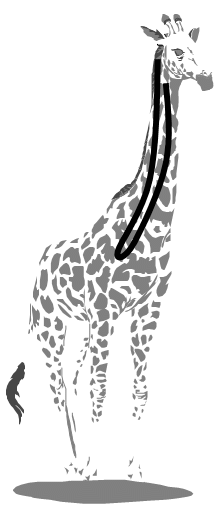I.12 Evolution is opportunistic and cannot plan ahead
Evolution is capable of creating useful structures and patterns of behaviour. However, in contrast to human beings, it is not capable of predicting and planning ahead. This inadequacy of biological evolution, its certain “short-sightedness” and opportunism is manifested in various ways. While a human being can estimate how a product that he intends to make should look and is capable of modifying his approach for this purpose, evolution works completely mechanically, entirely on the basis of the momentary conditions. Thus, it sometimes gets into blind alleys or creates quite strange, not very useful structures.
A classical example of the consequent “evolutionary tinkering” (Jacob 1977) consists in the eyes of vertebrates. In the eyes of vertebrates, the nerve fibres leaving the light-sensitive cells lead to the brain through the retina, so that the light impinging on the retina must first pass through a layer of these fibres. In addition, the fibres themselves must pass through the retina to the other side at a certain point, leading to the existence of blind spots – sites on the retina that are incapable of receiving optical signals. The eyes of cephalopods don’t have such a structural drawback; the optical fibres are located behind the retina and can thus achieve better optical parameters. It is probable that, for the originally imperfect eye containing only a few light-sensitive cells, it made no difference from a functional standpoint whether the nerve fibres were in front of the retina or behind it. Only after the retina became larger and the density of the light-sensitive cells increased did the disadvantages of the original structural design become apparent. However, at that time, a change in the anatomy of the vertebrate eye would require such fundamental changes in its ontogenesis that it was practically impossible.

Fig. I.14 Suboptimal evolutionary structural design. As the recurrent laryngeal nerve in vertebrates is located along the back of the aorta around the ductus arteriosus, it forms a sometimes very long, but functionally absurd, loop in the necks of modern tetrapod vertebrates.
The enervation of the larynx of mammals, for example the giraffe (Fig. I.14), constitutes a similarly strange structural design. The recurrent laryngeal nerve is located along the back of the aorta around the ductus arteriosus, so that it forms a functionally absurd loop several metres long. In short-necked mammals its makes no difference from a functional standpoint on which side of the aorta the nerves are located; the complete absurdity of the existing variant becomes fully apparent only in the modern giraffe.
